Introduction
Chemo Peel (Chemical Peel) can improve the skin’s appearance. When applied to the skin, Chemo Peel makes the skin “blister” and eventually peel off. The new skin is usually smoother and less wrinkled than the old skin.
What Chemo Peel involves
1 Superficial Peels
- Skin cells removed from the top layer of skin (epidermis).
- Left on the skin for a few minutes.
- Skin may feel tight for a couple of hours afterward.
- Regular treatment needed to maintain the effects.
2 Medium Peels
- Skin cells removed from the top and middle layers of skin.
- Left on the skin for a few minutes.
- A burning or stinging sensation may be felt when the peel is applied
- Skin may go brown or red in the days afterward.
- It can take up to six weeks for the skin to return to normal.
- Treatment is needed every 6 to 12 months to maintain the effects.
2 Deep Peels
- Affect deeper layers of skin.
- A local anesthetic and sedative may be needed.
- A freezing sensation may be felt when the peel is applied.
- Can be left on the face for 30 minutes or more, depending on the desired effect.
- Your heart and blood pressure need to be monitored as phenol, the chemical used, can cause dangerous effects on the heart and kidneys.
- Expect some peeling, redness, and discomfort for a few days.
- Swelling can last up to two weeks.
- Skin redness can last up to three months.
- Often results in lightening of the skin, so it’s not suitable for darker skin.
- It’s a one-off treatment with lasting effects, so doesn’t usually need to be repeated.
Advantage
Chemo Peel can be used to:
- Reduce fine lines under the eyes and around the mouth.
- Treat wrinkles caused by sun damage and aging.
- Improve the appearance of mild scars.
- Treat certain types of acne.
- Reduce age spots, freckles, and dark patches (melasma) due to pregnancy or taking birth control pills.
- Improve the look and feel of skin.
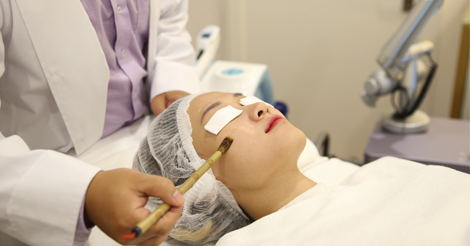
At Paragon Clinic, we understand that the beauty of the skin has to be protected and preserved for a long time. For each particular skin condition, Dermatologist directly evaluates and offers distinct solutions to provide optimal – saving cost performance for every client.
1 Safe.
2 No painful.
3 No bleeding.
4 No downtime.
5 Fast result.
6 Easy to maintain the effect.
Ideal Patients
Who Is a Good Candidate For a Chemo Peel?
Fair-skinned and light-haired patients are better candidates for Chemo Peels. If you have darker skin, you may also have good results, depending upon the type of problem being treated. But you also may be more likely to have an uneven skin tone after the procedure.
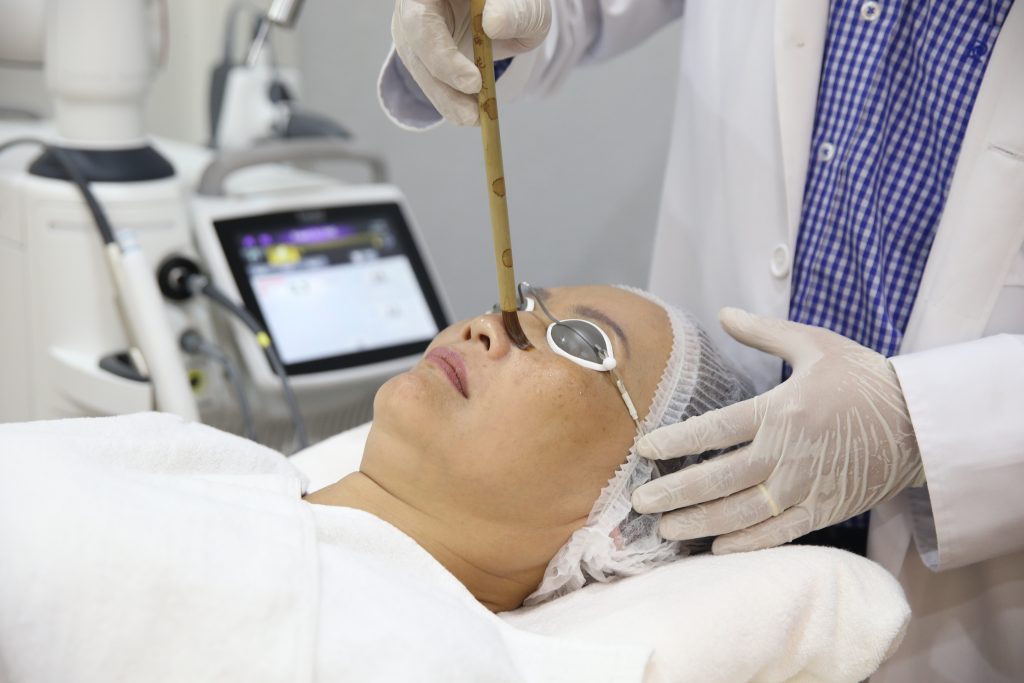
Who is not a candidate for a Chemo Peel?
Light-haired and fair-skinned people are the best candidates for a Chemo Peel. The procedure does not work as well on dark-skinned patients. The method is not recommended for individuals with infections, active skin disease, cut or broken skin, sunburns or active Herpes simplex one sore. Other counter-indications include patients who are:
- Nursing or pregnant.
- Have taken Accutane in last six months.
- Have psoriasis, eczema, dermatitis or rosacea.
- Have used Retin-A, Renova, prescription skin care products, products that contain ascorbic acid, bleaching or skin lightening agents or other acid-based products in the last 48 hours.
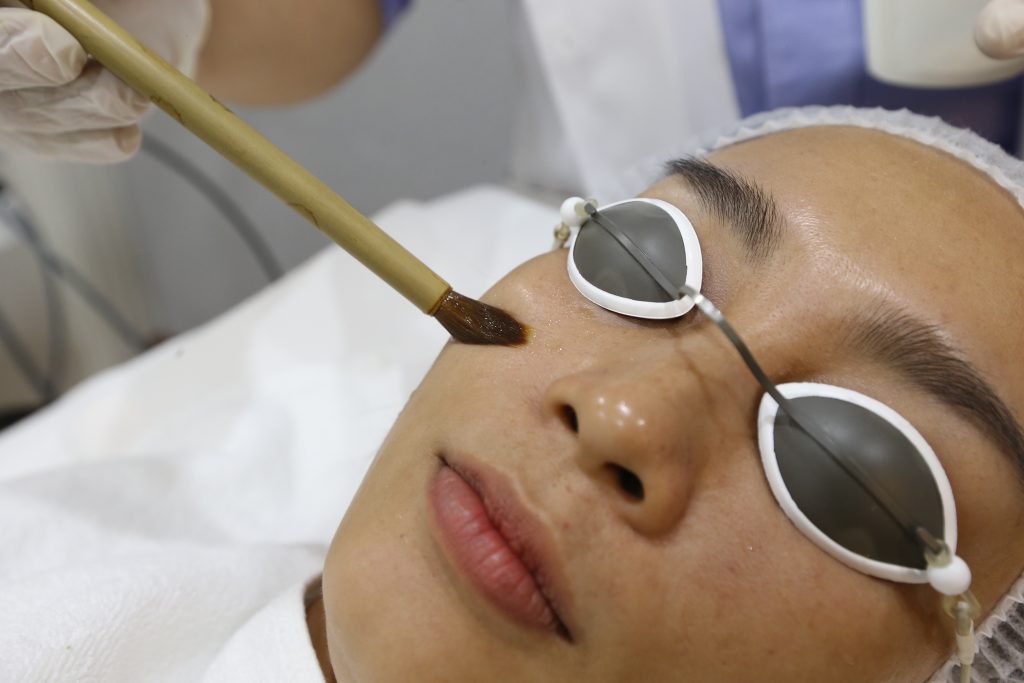
Skin sags, bulges, and more severe wrinkles do not respond well to Chemo Peels. They may need other kinds of cosmetic surgical procedures, such as laser resurfacing, a facelift, brow lift, eyelid lift, or soft tissue filler (collagen or fat). A dermatologic surgeon can help determine the most appropriate type of treatment for you.
Treatment area
Chemo Peel can be done on the face, neck, or hands.
Process
Before You Get a Chemo Peel
- Tell your doctor if you have any history of scarring, cold sores that keep coming back, or facial X-rays.
- Before you get a Chemo Peel, your doctor may ask you to stop taking certain drugs and prepare your skin by using other medications, such as Retin-A, Renova, or glycolic acid. The doctor may also prescribe antibiotics or antiviral drugs.
- Work with your doctor to determine the depth of your peel. This decision depends upon the condition of your skin and your goals for treatment.
- Ask your doctor in advance whether you will need to have someone drive you home after your peel.
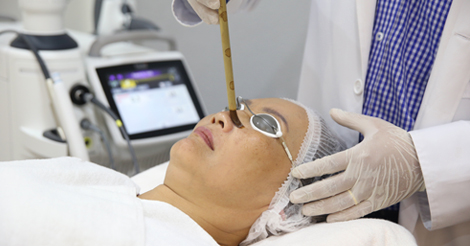
How Chemo Peels Are Done
You can get a Chemo Peel in a doctor’s office or a surgery center. It’s an outpatient procedure, meaning there’s no overnight stay.
Doctor will first clean your skin thoroughly. Then Dr. will apply one or more chemical solutions — such as glycolic acid, trichloroacetic acid, salicylic acid, lactic acid, or carbolic acid (phenol) — to small areas of your skin. That creates a controlled wound, letting new skin take its place.
During a Chemo Peel, most people feel a burning sensation that lasts about five to ten minutes, followed by a stinging sensation. Putting cool compresses on the skin may ease that stinging. You may need pain medication during or after a deeper peel.
Notice
Areas of sun damage may improve after Chemo Peeling.
After a Chemo Peel, skin is temporarily more sensitive to the sun, so wear sunscreen every day. It should say “broad-spectrum” on the label, meaning it protects against the sun’s UVA and UVB rays. Also, it should be a physical sunscreen and be above SPF 30. Limit your time in the sun, especially between the hours of 10 a.m. and 2 p.m., and wear a wide-brimmed hat.
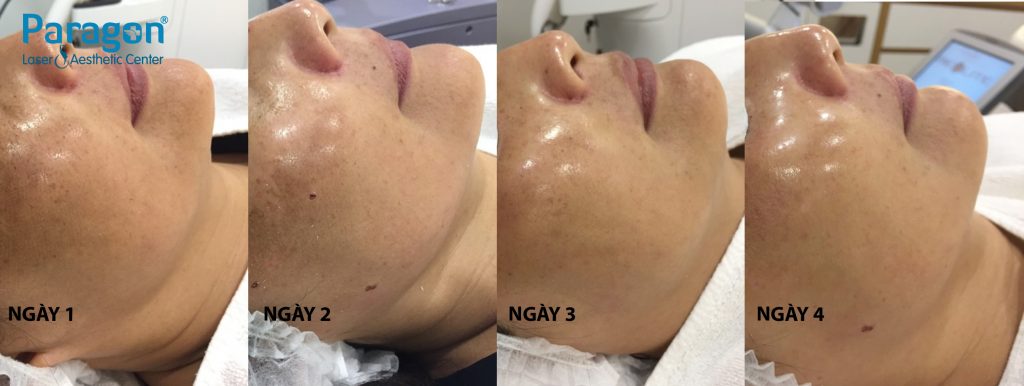
The result is various depending on each specific case.
What To Expect After the Chemo Peel
Depending upon the type of Chemo Peel, a reaction similar to sunburn occurs following the procedure. Peeling usually involves redness followed by scaling that ends within three to seven days. Mild peels may be repeated at one to four-week intervals until you get the look you’re after.
Medium-depth and deep peeling may result in swelling as well as blisters that may break, crust, turn brown, and peel off over a period of seven to 14 days. Medium-depth peels may be repeated in six to 12 months, if necessary.
After treatment, you may need bandages for several days on part or all of the skin that was treated.
You’ll need to avoid the sun for several months after a Chemo Peel since your new skin will be fragile.
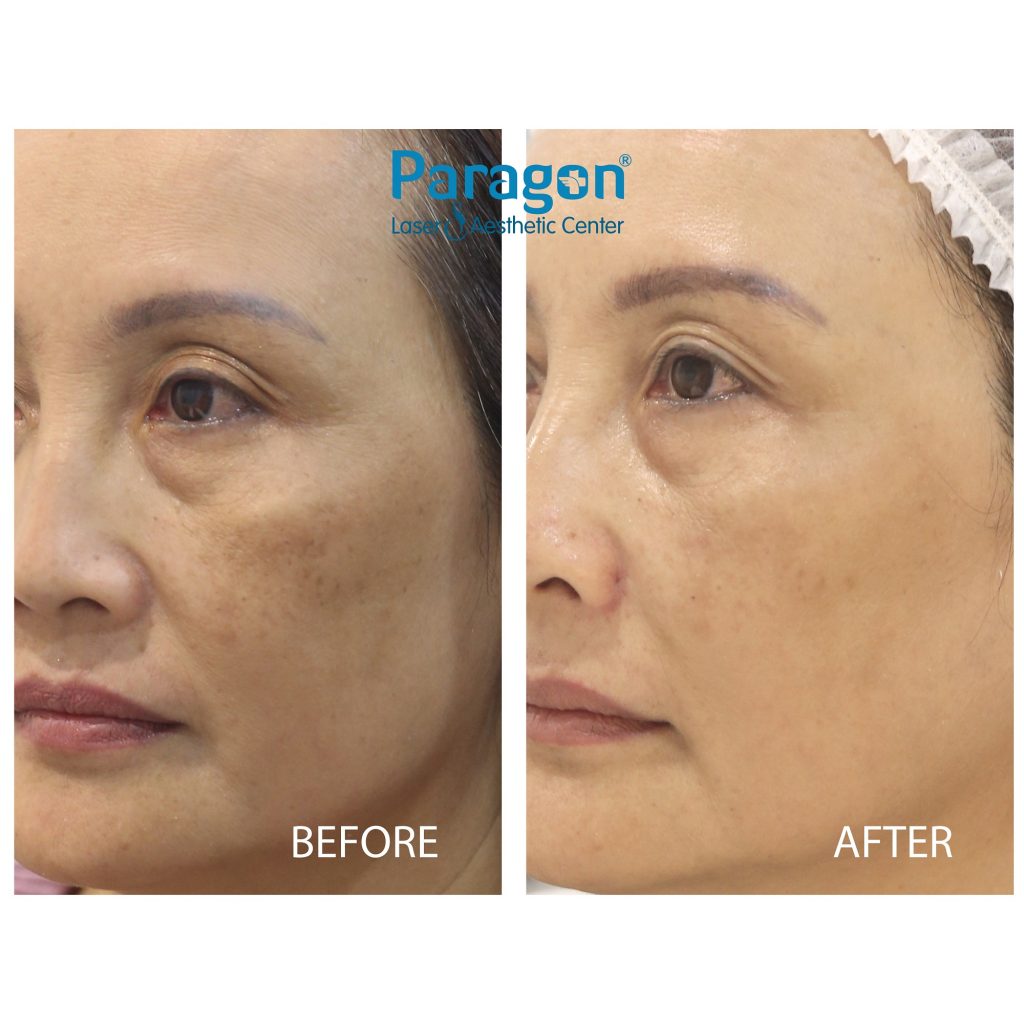
The result is various depending on each specific case.
Possible Complications
Some skin types are more likely to develop a temporary or permanent color change in the skin after a Chemo Peel. Taking birth control pills, subsequent pregnancy or a family history of brownish discoloration on the face may make that more likely.
There is a low risk of scarring in certain areas of the face. Some people may be more likely to scar. If scarring does happen, it can usually be treated with good results.
For people with a history of herpes outbreaks, there is a small risk of reactivating cold sores. Your doctor can prescribe medication to prevent or treat that.
